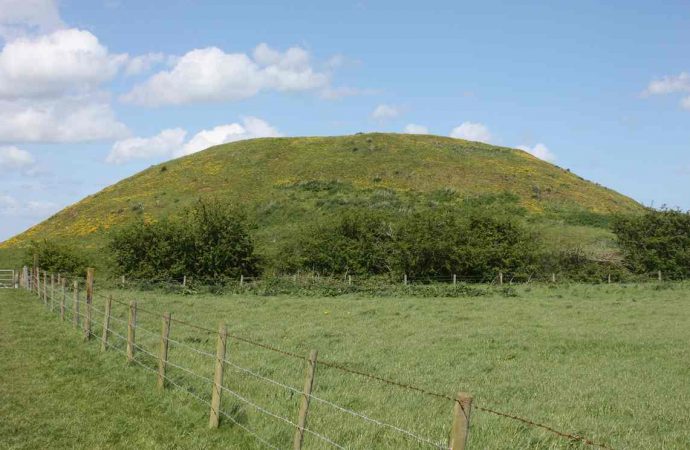Earthwork in Yorkshire is 1,500 years older than previously thought and likely to have been a burial mound
When the Normans decided to set their mark on Skipsea in Yorkshire, within 20 years of the 1066 invasion, they didn’t bother to build a new mound for their motte-and-bailey castle: instead they upcycled the massive earth mound they found waiting for them, dominating the landscape as it had for the previous 1,500 years.
Skipsea, a huge mound – 85 metres in diameter, 13 metres tall – is now revealed following a recent excavation as an earthwork resembling the famous Silbury in Wiltshire, the largest manmade prehistoric hill in Europe. Although Silbury is more imposing, twice the height and 2,000 years older, Skipsea is a unique example from Iron Age Britain. The closest mound of a similar size and age is in Germany.
Skipsea is still described in the official guides as a Norman structure, dating from around 1086, although most of the timber and stone has vanished, leaving the spectacular evidence of the skill and hard work of the Iron Age Britons 2,500 years ago.
Jim Leary, from the University of Reading, who led the excavation and also led the most extensive excavation at Silbury 10 years ago, said it was an astonishing discovery.
“To say that the discovery of an Iron Age monument hiding in plain sight was surprising is an understatement. Conventional wisdom has suggested that castle mottes were brought to England by the Normans, following the conquest that began in October 1066, exactly 950 years ago,” Leary said.
“Castle mottes exist up and down the country, but their huge size means they are rarely excavated and as a result much of what we previously thought we knew about their date was based on scant documentary evidence and guesswork.
“The supposition is that Skipsea is likely to be a burial mound – that’s the only reason we know of for people in the Iron Age to raise such structures – but we have no evidence yet to prove that. There is much more work to be done at Skipsea.”
One comparable burial mound at Heuneburg, in Germany, held several burial chambers, and though they had been robbed in antiquity, 20th-century excavation found weapons, traces of a chariot, and gold and bronze ornaments.
Leary expects to discover more ancient mounds repurposed as Norman castles through a dating technique that he described as resembling a giant apple-corer, which extracts a small core containing datable material including seeds and pollen without damaging the monuments.
His suspicions about the true dates of castle mounds began when he was working on Silbury and driving every day past another mound within the grounds of Marlborough school. That was believed to be either Norman or, possibly, a much later garden folly: in fact it proved, like Silbury, to be more than 4,000 years old.
Some of the sites believed to be Norman that he has investigated have turned out to be much later: Lewes Castle in East Sussex has two mounds, both confidently described as Norman, but one has turned out to be far more recent, dating from the 15th century.
Leary has 10 more castle mounds on his list to sample next year, but has decided against disturbing the owner of one of the most famous in the country, the Queen at Windsor. “We did consider it, but there was some recent research including samples taken by English Heritage at the time of the fire, which seem to show pretty conclusively that it is Norman, so I think we’ll leave that one alone.”
Source: The Guardian

































Leave a Comment
You must be logged in to post a comment.